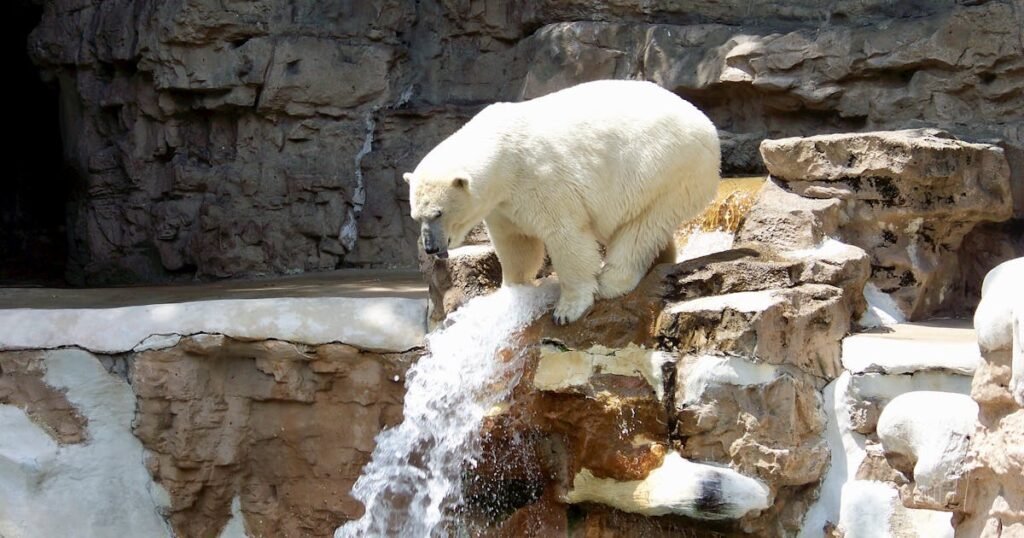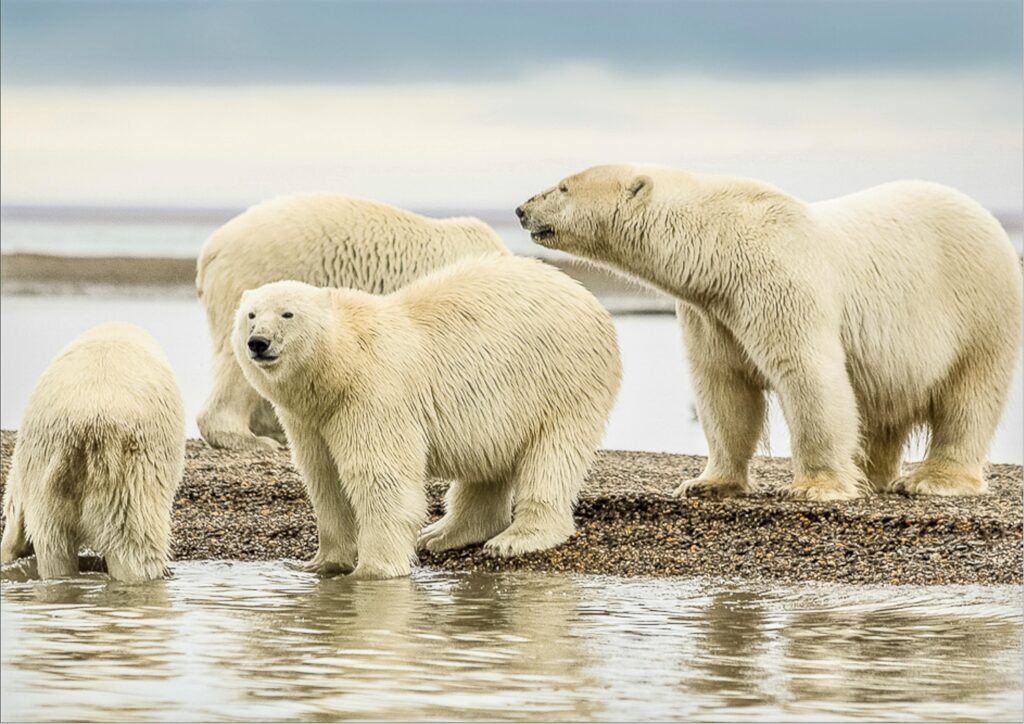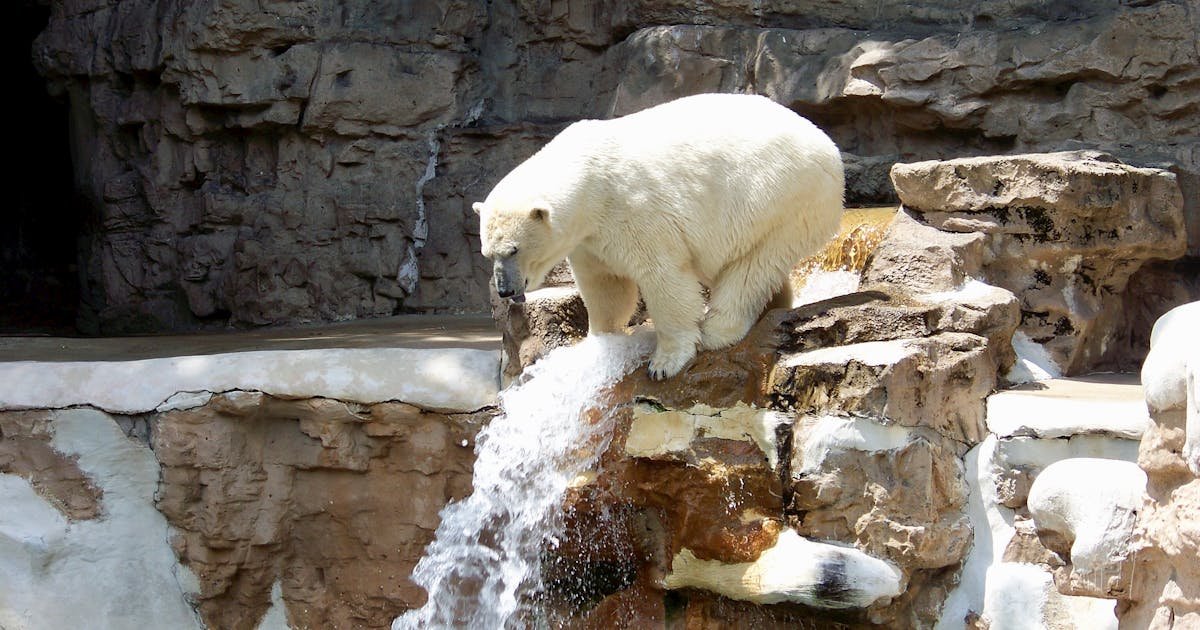
Table of Contents
Introduction
In this article we will study about interesting facts about polar bears and its ecology. Polar bears (Ursus maritimus), the majestic white giants of the Arctic, grab the imagination with their imposing size and astonishing adaptations to the harsh polar habitat. Polar bears are not only iconic emblems of the Arctic wildness, but they also play an important role in maintaining the fragile balance of the ecosystem. In this detailed examination, we’ll learn 10 intriguing facts about these incredible creatures, including their biology, lifestyle, and the challenges they confront in a changing world.
1. Interesting Facts About Polar Bears Anatomy and Adaptations
Polar bears are uniquely adapted to withstand the harsh conditions of the Arctic. Their most distinguishing characteristic is their white fur, which provides excellent camouflage in the snow and ice. Despite their look, polar bear skin is black, which helps absorb and retain heat from the sun. Furthermore, their huge paws function as snowshoes, spreading their weight and keeping them from sinking into the snow.

2. Arctic Apex Predators
Polar bears are the world’s largest land carnivore in the arctic region. Their main prey is seals, specifically ringed and bearded seals. Polar bears are expert hunters who use their great sense of smell to discover seal breathing holes in the ice. Polar bears wait patiently near these openings, using extraordinary stealth and agility to ambush seals when they surface for air.

3. Polar Bear Diet and Feeding Habits
The majority of a polar bear’s diet consists of blubber-rich seals, which are essential for providing the energy required to survive in the Arctic’s severe climate. During the summer, when seals are scarce, polar bears may turn to scavenge on carcasses, bird eggs, and plants. However, their survival is inextricably linked to the presence of sea ice, which provides as a platform for hunting seals.
4. Sea Ice Habitat Dependency
Polar bears rely heavily on sea ice for several elements of their life cycle, including hunting, mating, and denning. Bears exploit sea ice to hunt seals and to travel over vast Arctic regions. The continuing loss of Arctic Sea ice due to climate change poses a significant threat to polar bears, limiting their capacity to acquire food and navigate their surroundings.

5. Maternal Care and Denning
Female polar bears give birth in snow and ice-filled winter dens. Pregnant females go into a state of dormancy known as “walking hibernation,” in which they don’t eat or drink for months. After giving birth, the mother cares for her cubs in the den, providing warmth, safety, and sustenance from her own bodily reserves. This phase of maternal care is critical to the survival of the delicate cubs.

6. Polar Bear Life Cycle
A polar bear’s life cycle is inextricably linked to the seasonal variations in the Arctic environment. Mating happens in the spring, and females give birth to one to three cubs in December or January. The cubs stay with their mother for around two and a half years, during which time they learn important survival skills. As climate change disturbs Arctic ecosystems, the timing of sea ice formation and breakdown has an increasing impact on polar bear reproductive and cub survival.
7. Polar Bear Communication
Polar bears communicate using a variety of vocalisations, body language, and scent marking. Polar bears communicate with one another through vocalisations such as roars, growls, and chuffs, despite their solitary nature. During the mating season, males may perform vocal displays to attract females. Scent marking, which includes leaving footprints and scent trails, is also important for establishing territories and signalling reproductive status.

8. Incredible Swimming Abilities
Polar bears are excellent swimmers who can travel long distances in the water. They are known to swim for hours, travelling up to 60 miles (97 kilometres) at a time. This skill enables them to hunt their principal food, seals, which frequently move across ice floes. Bears use their huge front paws for paddling and their rear legs for propulsion, demonstrating exceptional efficiency in watery situations.

9. Global Distribution and Habitat
Polar bears are most typically associated with the Arctic; however, they can be found throughout the Northern Hemisphere’s polar areas. They are located in the Arctic Circle, which includes the Arctic Ocean, neighbouring waters, and landmasses. They live in a wide variety of habitats, including sea ice, coastal areas, tundra, and offshore islands. Polar bears’ unique adaptations reflect the challenges and opportunities given by their diverse environment.
10. Conservation Challenges and Efforts
Polar bears face extraordinary problems as a result of climate change, with the fast loss of Arctic Sea ice being a severe hazard. Polar bears’ fasting periods lengthen, their access to prey decreases, and human-bear confrontations grow as their sea ice habitat shrinks. Conservation activities are aimed at reducing the effects of climate change, protecting vital ecosystems, and fostering polar bear coexistence with local communities.
Conclusion
Polar bears, with their majestic presence and extraordinary adaptations, embody the Arctic’s beauty and fragility. As we explore the intriguing world of polar bears, it becomes clear that their survival is inextricably related to the health of the Arctic ecosystem. Understanding these extraordinary species, their behaviours, and the problems they encounter lays the groundwork for effective conservation efforts. Through collective global action, we can work to ensure that polar bears continue to traverse the cold expanses of the Arctic, demonstrating the resilience and interdependence of our planet’s different ecosystems.

I like this web site it’s a master piece! Glad I noticed this
ohttps://69v.topn google.Leadership